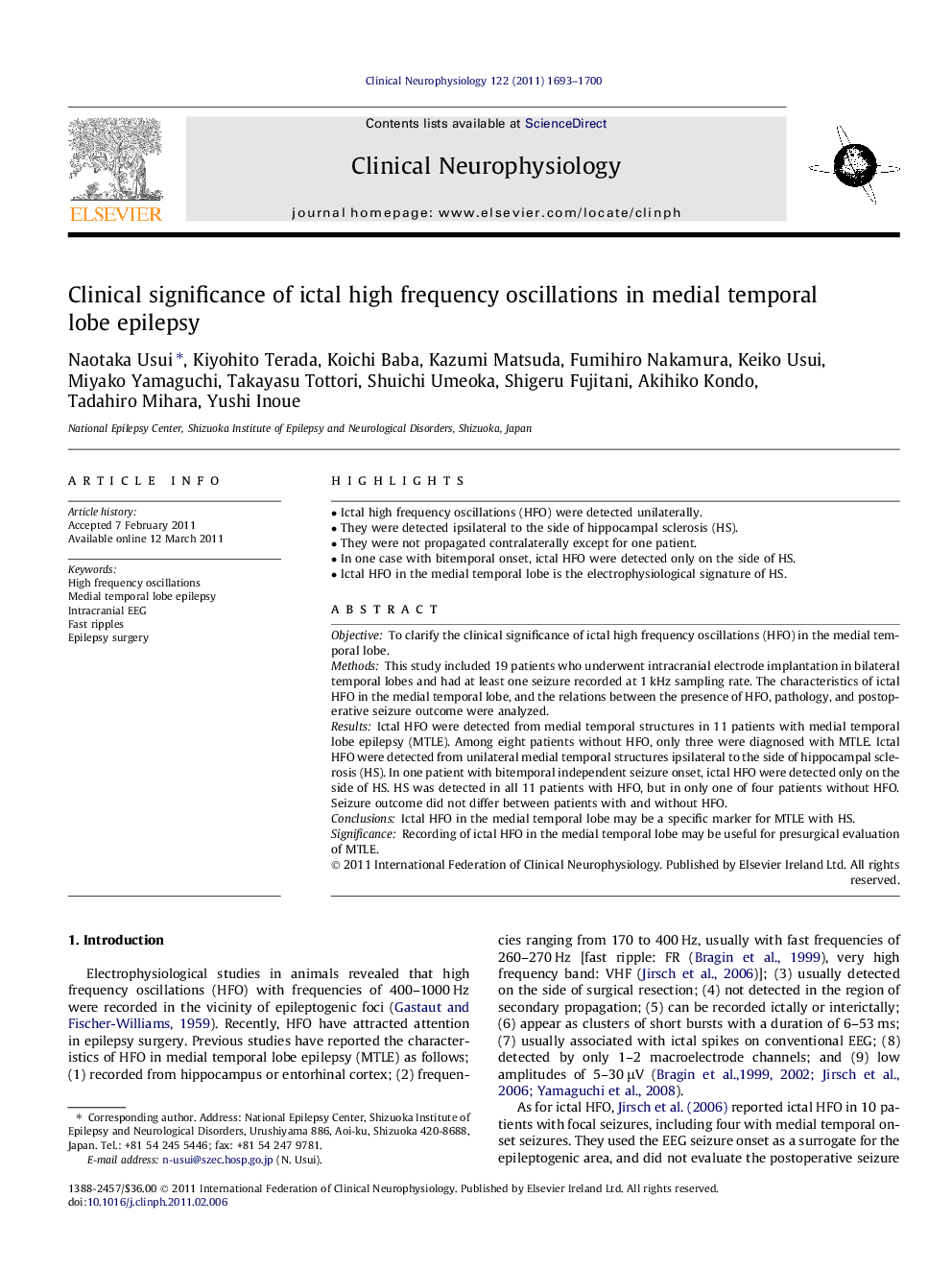| Article ID | Journal | Published Year | Pages | File Type |
|---|---|---|---|---|
| 3045775 | Clinical Neurophysiology | 2011 | 8 Pages |
ObjectiveTo clarify the clinical significance of ictal high frequency oscillations (HFO) in the medial temporal lobe.MethodsThis study included 19 patients who underwent intracranial electrode implantation in bilateral temporal lobes and had at least one seizure recorded at 1 kHz sampling rate. The characteristics of ictal HFO in the medial temporal lobe, and the relations between the presence of HFO, pathology, and postoperative seizure outcome were analyzed.ResultsIctal HFO were detected from medial temporal structures in 11 patients with medial temporal lobe epilepsy (MTLE). Among eight patients without HFO, only three were diagnosed with MTLE. Ictal HFO were detected from unilateral medial temporal structures ipsilateral to the side of hippocampal sclerosis (HS). In one patient with bitemporal independent seizure onset, ictal HFO were detected only on the side of HS. HS was detected in all 11 patients with HFO, but in only one of four patients without HFO. Seizure outcome did not differ between patients with and without HFO.ConclusionsIctal HFO in the medial temporal lobe may be a specific marker for MTLE with HS.SignificanceRecording of ictal HFO in the medial temporal lobe may be useful for presurgical evaluation of MTLE.
► Ictal high frequency oscillations (HFO) were detected unilaterally. ► They were detected ipsilateral to the side of hippocampal sclerosis (HS). ► They were not propagated contralaterally except for one patient. ► In one case with bitemporal onset, ictal HFO were detected only on the side of HS. ► Ictal HFO in the medial temporal lobe is the electrophysiological signature of HS.
